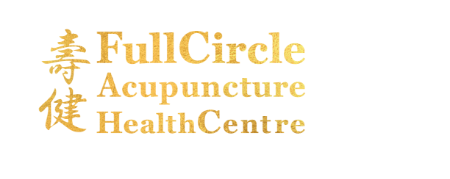A physicist had a horseshoe hanging on the door of his laboratory. His colleagues were surprised and
asked whether he believed that it would bring luck to his experiments. He answered, “No, I don’t believe
in superstition, but I was told that it works even if you don’t believe in it.”
─R.L. Weber, A random Walk in Science
针刺 ZHEN CI - ACUPUNCTURE

How does it work? How does it help the body heal itself?
Acupuncture moves Qi. The human body is its own manufacturer of the chemical compositions of its fluids. During illness, given the appropriate stimulation the body can heal itself and maintain health and function regardless of external conditions. Qi is the Yang of blood, and when Qi flows unencumbered, blood follows and there is health.
At the level of the skin and nerve endings, when an acupuncture needle is inserted, the body sets into motion an automatic series of events to repair the injured tissue, referred to as the “cascade of healing.” The body considers each needle puncture, an injury. For wrinkle repair, facial acupuncture treatment protocol uses this automatic series of events that is discharged by the body’s repair system in and around the location of each needle, as white blood cells called neutrophils begin the defensive and inflammatory process. As the neutrophils leave, other cells called macrophages arrive to continue clearing debris. These cells also secrete growth factors and proteins that attract immune system cells to the injury to facilitate tissue repair by saturating the area with collagen.
While on one front the body is diligently repairing the micro injury caused by the needling proper, each acupuncture point needled, has its own distant effect by the stimulation of innervations and branch nerves through the neurophysiological mechanism of the body. These are the meridians in Chinese medicine. When an acupuncture point is needled and stimulated it has an effect through certain segments of the meridian depending on the location of the point.
Qi travels through the channels or meridians incessantly. When Qi is stuck in the channels, illness ensues. Acupuncture unblocks the meridians and moves Qi to effect proper functioning of the internal environment.
The World Health Organization (WHO) and the National Institute for Health (NIH) recognize Acupuncture and Traditional Chinese Medicine (TCM) for the treatment of many disorders. A trained acupuncturist and herbalist will best assess each of these conditions according to eastern principles and develop a treatment plan that will benefit many health issues. Some health issues may be symptoms of larger imbalances. Below is a list of commonly treated conditions recognized by the WHO.
Notice that the list is merely a labeling system used by modern medicine to group a set of symptoms presented by the body at a given time. In Chinese medicine, the condition, or the patient’s specific issues or symptoms is not what treatment is based upon, as symptoms or issues may arise from differing causes or a complex relationship of multiple causes; thus, treating ‘conditions’ would lead to poor treatment results. Said in other words, in Chinese medicine there is no Carpal Tunnel Syndrome, or Cystitis, or Irritable Bowel syndrome, etc., because those are the labels ascribed by Western medicine methods. Chinese medicine treats the whole person and tonifies or sedates Yin or Yang through regulating the movement of Qi with acupuncture; and in the case of an imbalance that has  penetrated and reached the Zhang Fu organs, Chinese medicine uses herbal formulas.
penetrated and reached the Zhang Fu organs, Chinese medicine uses herbal formulas.
Commonly Treated Conditions Listed By The WHO
Acute & Chronic Pain, Allergies & Sinusitis, Arthritis & Joint Pain, Anxiety & Insomnia depression, Asthma & Bronchitis, Upper Back pain, Neck, Shoulder Pain Bursitis & Tendonitis/Tendinitis, Cancer support treatment, Cardiovascular Diseases, Carpal Tunnel Syndrome, Chronic Fatigue, Common Cold & Flu, Constipation, Irritable Bowel Syndrome, Headache Migraine, Hypertension, Cystitis, Depression, Endocrinological disorders, Fibromyalgia, Gastro-Intestinal Disorders, Headache & Migraine, Hip/Leg & Sciatic Pain, Hemorrhoids, Hypertension, Incontinence, Immunological disorders
Gynecological Disorders: Amenorrhea, Dysmenorrhea, Fibroids, Endometriosis, Infertility, Irregular Menstruation, Menopause Induction of Labor, Morning Sickness, PMS (Premenstrual Syndrome), Advanced Maternal Age Infertility, Unexplained Infertility, Premature Ovarian Failure (POF), High FSH, Male Factor Infertility, Recurrent miscarriage, Impotence/erectile dysfunction, Luteal Phase Defect, High Prolactin (Prolactinemia), Pelvic Inflammatory Disease, Immunological Infertility, Fibroids and Uterus polyps, PCOS, Ovarian Cysts, Abnormal/Excessive Uterine Bleeding, Irregular Menstrual Cycles (Including post pill amenorrhea).
Peripheral Neuropathy, Liver Disease & Hepatitis, Low Back Pain, Sciatica, Sinusitis, Smoking Cessation, Sports Injuries, Stroke & Paralysis, Substance Abuse, TMJ, Vertigo.
Besides the above, other conditions not mentioned could also be helped with Chinese medicine and acupuncture, that the WHO will eventually add to its list. Chinese herbal medicine has been treating viral and parasitic conditions called GU ZHENG for as long as the ages, especially in places where modern medicine is not accessible due to prevalent poverty in many regions of China and the world. Over generations TCM has formed a unique system to promote and maintain health as well as diagnose and cure illnesses.
Acupuncturists diagnose human illness in terms of TCM which perceives the human organism and its processes as flows of Qi ─somewhat like the currents, eddies and swirls in a stream or lake. The major currents are called channels or meridians or in Chinese, jing luo. The twelve major channels connect with organs in the trunk. Each of the twelve is named for the organ with which it connects, plus two extra channels with their own points, one that follows the front, called REN Mai or Conception Vessel; and one that follows the back, called DU Mai or Governing Vessel. Proper rate of flow and volume of Qi in the channels determine the state of health.
__________________________________________________________________________________________________________________________________________________________________REFERENCE
-Personal classroom notes. 2005-2006.
-Peter Deadman & Mazin Al-Khafaji with Kevin Baker. A Manual of Acupuncture. 2007 by Journal of Chinese Medicine Publications.
-Above Article Written by Dr. Osorio, Gloria DAOM, L.Ac. 2012.
![]()
